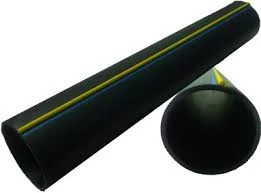Dec . 01, 2024 11:48 Back to list
pvc rod
The Versatility of PVC Rods Applications, Benefits, and Considerations
Polyvinyl chloride, commonly known as PVC, is one of the most widely used synthetic plastic polymers in the world. Among its various forms, PVC rods have gained significant attention for their broad range of applications across multiple industries. From construction to arts and crafts, these rods offer a unique combination of properties that make them an ideal choice for numerous projects.
What are PVC Rods?
PVC rods are cylindrical lengths of solid PVC material. They can be produced in various diameters and lengths, making them suitable for various applications. The manufacturing process involves the polymerization of vinyl chloride, which results in a durable, rigid product capable of withstanding different environmental conditions. PVC rods can be produced in different grades to meet various standards required by specific applications.
Key Properties of PVC Rods
One of the standout features of PVC rods is their excellent chemical resistance. They are impervious to a wide range of acids, alkalis, and salts, making them an ideal choice for chemical containment and piping applications. Additionally, PVC rods are lightweight yet strong, providing an outstanding strength-to-weight ratio. Their low thermal conductivity ensures that they withstand heat without degrading, while their water-resistant nature makes them suitable for use in moist or underwater environments.
Another significant property of PVC rods is their ease of fabrication. They can be easily cut, drilled, and shaped using standard workshop tools, enabling customization for specific project needs. Furthermore, they can be bonded with appropriate adhesives, allowing for assembling complex structures. PVC rods can also be painted or coated, offering versatility in design and aesthetics.
Applications of PVC Rods
PVC rods are utilized in a myriad of applications
pvc rod

1. Construction and Building Industry PVC rods are often used in the construction sector for creating frameworks, supports, and reinforcement structures due to their rigidity and weather resistance.
2. Engineering and Manufacturing In mechanical engineering, PVC rods can serve as insulating components, spacers, or even as part of a product's ecosystem, thanks to their electrical insulating properties.
3. Craft and Hobby Projects The ease of cutting and shaping PVC rods makes them a popular choice in arts and crafts. Hobbyists can create models, decorations, or custom tools tailored to their specific needs.
4. Aquatic Uses Given their water resistance and durability, PVC rods are frequently used in aquaculture and marine applications, such as fish habitats or supports for underwater structures.
5. Medical Applications PVC rods are also employed in the medical field, especially in the creation of specific equipment or supports, owing to their versatility and hygiene properties.
Considerations When Using PVC Rods
While PVC rods offer many advantages, some considerations should be kept in mind. For example, exposure to extreme temperatures can warp the material. Additionally, while PVC is generally safe, certain additives used in its manufacture can pose environmental concerns, particularly during disposal. Furthermore, it is crucial to ensure proper ventilation when cutting or machining PVC, as the fumes released can be harmful if inhaled.
Conclusion
In conclusion, PVC rods are an incredibly versatile material, suitable for a wide array of applications across various industries. Their unique properties—such as chemical resistance, lightweight nature, and ease of fabrication—make them a go-to material for both professional and DIY projects. Understanding their uses and limitations can help maximize their potential, allowing enthusiasts and professionals alike to benefit from this remarkable material. As technology progresses, the application of PVC rods is likely to expand even further, solidifying their place in the modern materials landscape.
-
High-Quality PPR Pipes and Fittings Durable ERA PPR & PVC PPR Solutions
NewsJul.08,2025
-
Black HDPE Cutting Board - Durable, Non-Porous & Food Safe HDPE Plastic Cutting Board
NewsJul.08,2025
-
High-Quality CPVC Panel Durable HDPE & PVC Panels Supplier
NewsJul.08,2025
-
Double PE Welding Rod Supplier - High Strength, Durable & Versatile Welding Solutions
NewsJul.07,2025
-
High-Quality PVC-O Pipe Supplier Durable 75mm PVC Pipe & Connections Leading PVC Pipe Company
NewsJul.07,2025
-
HDPE Drainage Pipe Supplier – Durable & Corrosion-Resistant Solutions
NewsJul.06,2025

